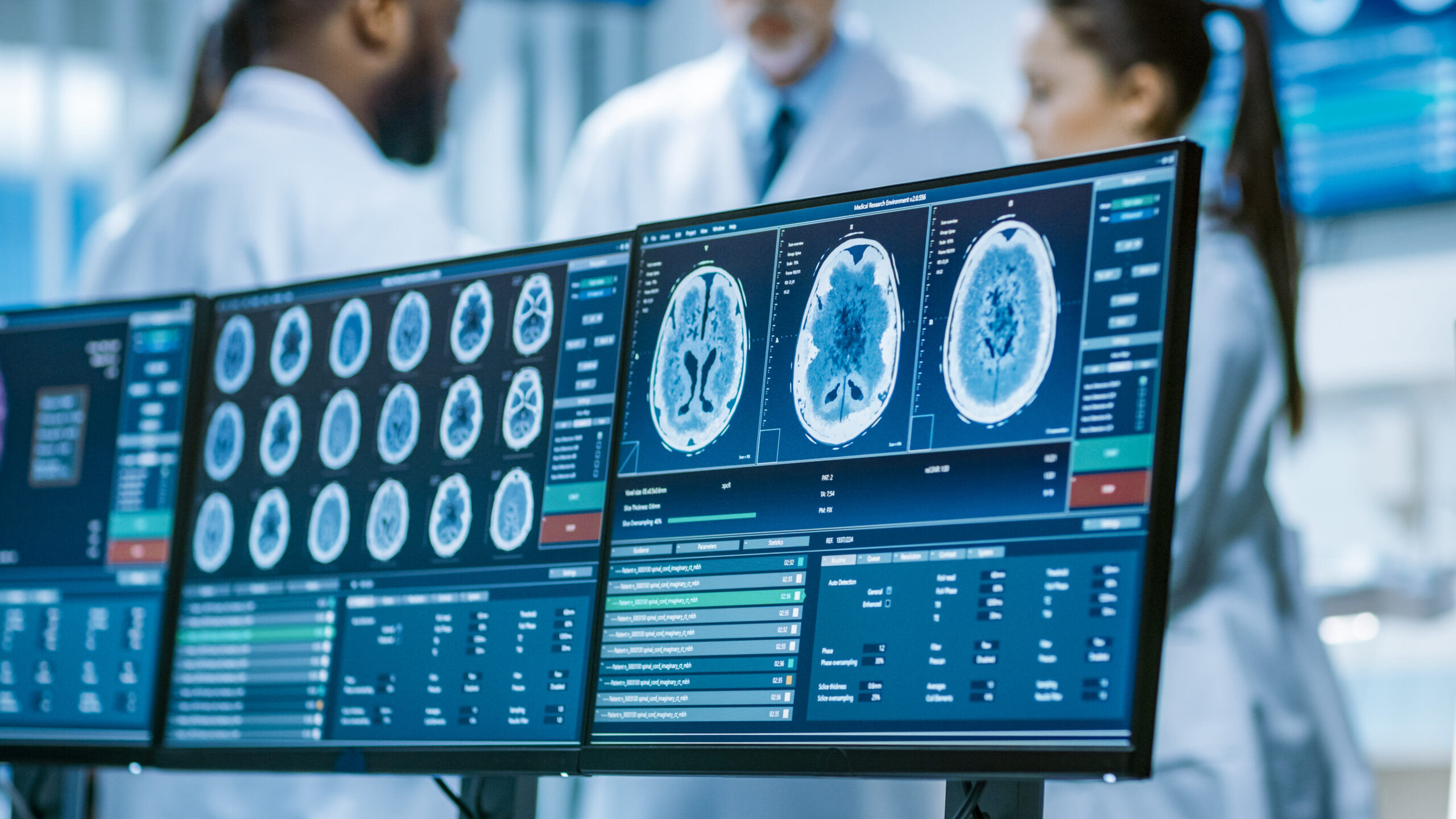
Release date: 2021.12.09
In the field of diagnostic imaging, where diagnoses are made using X-rays, echoes, MRIs, etc., artificial intelligence (AI) has been put to practical use quickly, and the use of AI is expected to improve the quality of diagnosis and work efficiency. In Japan, software that has been approved by the Pharmaceuticals and Medical Devices Law has also appeared as a medical device for image analysis and diagnosis support.
Japan is one of the world's leading countries with CT and MRI equipment, but the number of radiologists with diagnostic imaging skills per capita is the lowest among OECD member countries. As a result, a single radiologist is responsible for reading a large number of images, which is a heavy burden. In addition, there is also the problem that image diagnosis is not sufficient in depopulated areas with few doctors, so efforts such as reducing the workload of image diagnosis using AI are being carried out.
Image recognition learning models called convolutional neural networks (CNN) are used in AI-based diagnostic imaging systems. In recent years, technological innovations in CT and MRI have advanced, making it possible to accumulate large amounts of high-resolution image data. The accuracy of analysis has improved dramatically as it has become possible to use it for machine learning. The main purpose is to support the judgment of imaging diagnosticians, but in the near future it is also expected to be used for early detection of diseases.
Regarding AI that supports image diagnosis in Japan, endoscopic image diagnosis, which was the first in Japan to be approved under the Pharmaceutical Affairs Law for pharmaceuticals and medical devices in January 2020 for detecting lesions in endoscopes developed by CYBERNET SYSTEMS. The support software "EndoBRAIN-EYE" was released by Olympus. AI analyzes colonoscopy images and detects lesion candidates such as polyps and cancer in real time during endoscopy. Fujifilm also uses AI technology for endoscopy to develop a system that can detect polyps and cancer, and sells it as an endoscopy diagnosis support function "CAD EYE".
LPIXEL released EIRL aneurysm, a medical image analysis software that uses AI to analyze brain MRI images and detect cerebral aneurysms. By automatically detecting candidates for cerebral aneurysms larger than 2 mm and displaying them as marks, it is possible to improve diagnostic accuracy. The company also sells AI software "EIRL X-Ray Lung nodule" that detects lung nodule candidate areas from chest X-ray images.
AI-Rad Companion, developed by Siemens Healthcare and available on the market, supports reading support for chest CT examinations, including the detection of potential pulmonary nodules, automatic segmentation and contour extraction of organs, and morphometric measurements of the brain. .
In addition, AI Medical has developed an AI-based endoscopic diagnosis support system that uses AI to determine whether gastric lesions are neoplastic or non-neoplastic, and a system that detects cancer lesions in real time during examinations, called Gastric Cancer Detection. In August of this year, we applied for manufacturing and marketing approval for “AI for gastric cancer differentiation.” If approved, it will be the world's first endoscopic diagnosis support system for the gastric region using AI.
The Ministry of Health, Labor and Welfare has established the "Health and Medical Sector AI Development Acceleration Consortium" and is proceeding with studies toward the full-scale introduction of AI in these medical fields. According to the progress chart, from this fiscal year, in the "image diagnosis support", we will provide medical device manufacturers with supervised image data (using data that is a set of questions and correct answers to let AI learn) and image diagnosis using AI. We aim to develop support programs.
AI has significantly improved the accuracy of image diagnosis, and in the future, in addition to reducing the burden on image diagnosticians, it is expected that AI will perform image diagnosis in areas where there is a shortage of doctors, and the standard of insurance medical care will improve.

From the Ministry of Health, Labor and Welfare “Consortium for Accelerating AI Development in the Health and Medical Care Field: Process Schedule Based on Arrangement of Discussions and Future Direction (formulated on June 28, 2019)”
MEDIUS Group is developing a business centered on the sale of medical equipment. We (Medical + us) involved in medical care also want to play the role of an information source (Media) that delivers useful information for the medical field and people's healthy tomorrow.